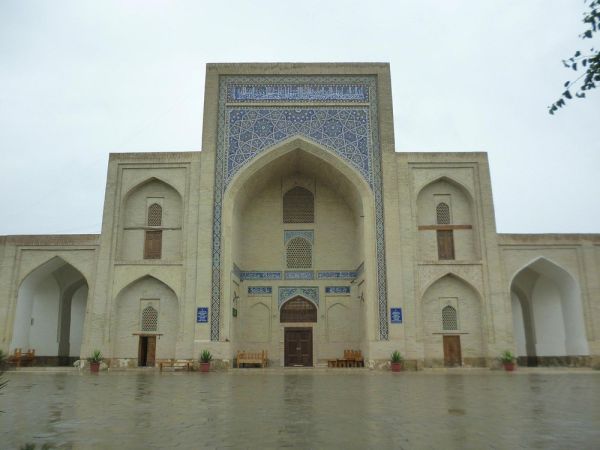Khanaka Mosque of Faizabad
The Khanaka Faizabad Mosque is not one of the most popular attractions in Uzbek Bukhara. Due to its distance from the historical center of the city, few tourists visit the Muslim prayer house. Nevertheless, there is a lot to see here.
The religious building was built in the 16th century. Burnt brick was used as the main material. The construction was carried out from 1598 to 1599. It was led by the initiator of the idea and a follower of Sufism, Mawlon Poyanda-Muhammad Ahsi (Ahsiketi)-yi Fayzobody. Unfortunately, the Sufi did not enjoy the result for long — two years after the completion of the construction, the man was gone. After the death of the creator, it was decided to rename the mosque. This is how the prayer house turned from a "Shokha Ahsi" into a "Khanaka of Faizabad".
The metamorphosis only affected the name. The previous functions of the building remained unchanged. The Khanaka of Faizabad still gathered Muslims for Friday prayers. This, by the way, is evidenced by a niche (also known as a mihrab) in one of the walls of the room, pointing in the direction of Mecca. But the importance of religious structure in the life of Muslims was not limited to this role alone.
The Faizabad Khanaka also served as a Sufi monastery. Wandering dervishes (the Muslim equivalent of a monk) often stayed within its walls. Especially for their accommodation, one part of the building was given over to the khanaka (as the Sufi monastery was called).
Architectural features
The Faizabad Mosque is a typical example of 16th century architecture, the main features of which were clear proportions and symmetry. The building has been restored more than once, but its identity and uniqueness have not been affected at all.
The first thing that attracts attention is the high peshtak portal framing the main entrance to the building. The portal rises above the entire building and has the appearance of a vertical rectangle with an arched and vaulted niche. Beautiful and majestic, it was also built in compliance with all the architectural canons of that time.
Arched-domed galleries are located on the sides of the portal, giving the building an elegant look. A harmonious addition to them is the richly decorated facade of the building. But the main dome of the mosque seems modest and rustic. But this is only at first glance. If you move inside the building, you will realize how much you were mistaken. The dome is lavishly decorated with white ganch patterns using a technique called chaspak. Thanks to her, the dome seems weightless.
The interior decoration of the mosque is dominated by two colors — blue and white. Gold and brown are used as additional colors. They can be seen when examining the mihrab in detail.
The historical significance of the Faizabad Khanaka has not gone unnoticed. UNESCO has added the landmark to the list of World Heritage Sites. And although nowadays you will not find Muslim monks here, the centuries-old walls of the mosque have not lost their value.





















